How To Find Network Settings In Windows 7
The Network and Sharing Center in Windows vii, 8 and 10 is one of the more of import and useful Control Panel apps that lets you run into information nigh your network and lets you brand changes that can affect how you admission resources on the network.
Unfortunately, nigh people never mess effectually with network settings considering they don't understand what everything means and are afraid to mess something up. Nonetheless, in one case you understand the settings, you can set up issues on your own, increment your privacy, and quickly setup file and printer sharing between multiple computers.
In this article, I'll walk y'all through the different aspects of the Network and Sharing Middle and bear witness you certain features you tin utilise on a regular footing to make yourself more productive.
Opening Network & Sharing Center
The showtime step is to open the Network and Sharing Center. The quickest style to get to it is by clicking on Start and typing in network and. This will instantly bring upward the app in the list.
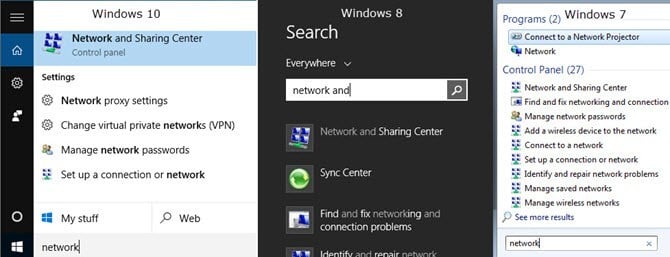
In all versions of Windows, the app is located in the Control Console. In Windows vii, just click on Offset and the Control Console is listed on the right side of the Offset Menu. In Windows 8.1 and Windows 10, just correct-click on the Offset Carte and choose Command Panel from the list.
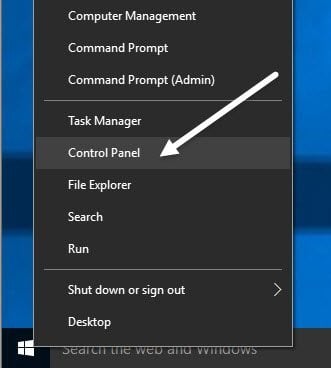
In the Control Panel, you tin can click on the Network and Internet category and then click on Network and Sharing Center. If you are in icon view, just click directly on Network and Sharing Middle.
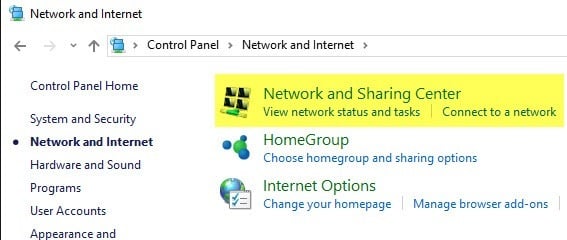
Individual or Public Network
The showtime thing yous'll run across when you lot open the Network and Sharing Center is your current connection to the network and to the Net. Windows 7 has a trivial bit more information and also a couple of more options.
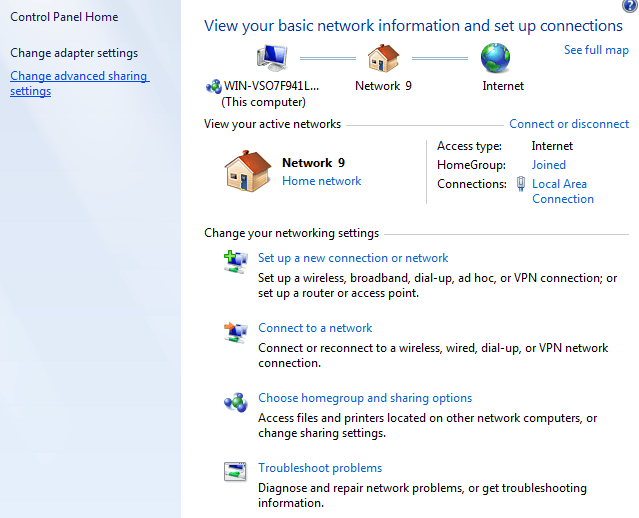
In Windows 8 and Windows 10, they cleaned up the interface by getting rid of a couple of items and combining other items.
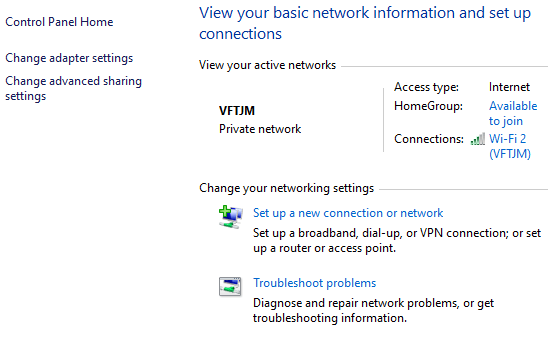
At the peak, you'll see the active network or networks, the network type, the blazon of admission, HomeGroup info and the connectedness info. The first matter to understand about this info is the network type, which is listed direct below the proper noun of the network.
In the to a higher place examples, one has Dwelling house network listed and the other has Private network listed. This is very important because when you are connected to a individual or abode network, there are a lot of sharing settings that are set by default to be trusting. This ways others can find your figurer on the network, possibly access shared folders, stream media from your figurer, etc.
Windows will normally try to effigy this out for you automatically so that when you connect to a public WiFi network, it will apply thePublic profile and not the private one. Sometimes, Windows will ask you if y'all desire to enable sharing or find devices in one case y'all connect to a network and if yous say yes, information technology volition make the network private. If yous choose no, it will brand the network public.
Yous tin can too manually change the network type to Public or Private depending on what kind of privacy y'all want. This can be useful, for example, if y'all are visiting someone and you want to make sure no one can access any data on your calculator while you lot are connected to their network. Change the network type to Public and no one will exist able to notice your estimator on the network.
Y'all can read my post on how to switch between public and private for the currently connected network. So what exactly does switching do? Well, you lot tin can see all of the different sharing settings when you lot click on the Change advanced sharing settings link, which I explain in detail in the next section below.
To the correct of the network name and network type, you'll see HomeGroup and Connections. Next to HomeGroup, you'll see a link that says Available to join or Gear up to create depending on whether a HomeGroup already exists on the network or non. A HomeGroup allows you to easily share files, printers and more between computers. I talk more than about it in the Advanced Sharing Settings section below.
Next to Connections, you can click on the name of the WiFi or Ethernet network to bring upward the condition info dialog for the current connectedness. Here yous tin see how long you lot have been connected, the point quality for WiFi networks, the network speed, etc. Y'all tin likewise disable the connection and diagnose the connexion if at that place is a problem.
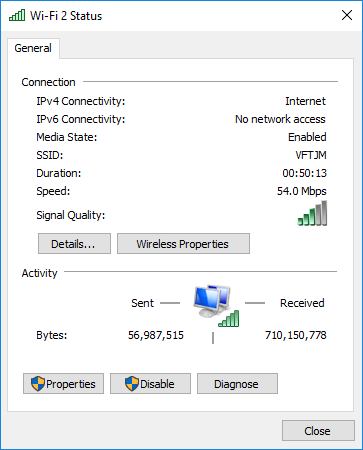
For WiFi networks, this screen is useful because y'all can click on Wireless Properties and so click on the Security tab and view the WiFi password. This is really useful if you have forgotten the WiFi password, but still have a computer that is connected to the network.
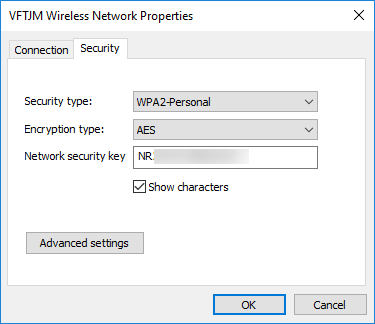
Lastly, if you click on Details, yous tin get more info most the current network like the Default Gateway (router IP accost), MAC address, and computer IP address.
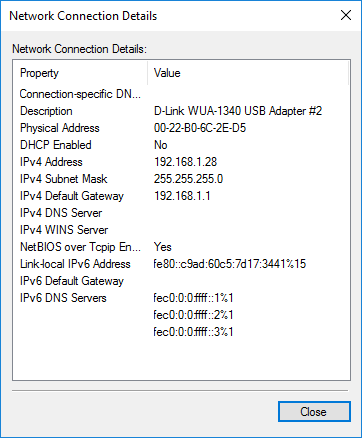
Avant-garde Sharing Settings
The advanced sharing settings dialog is main place for managing how your computer communicates with the balance of the network. In Windows vii, yous take two profiles: Domicile or Work and Public. Only one profile can exist active at a time. All the settings are the same and repeated under each profile.

In Windows 8 and ten, you have three profiles: Individual, Guest or Public and All Networks. Basically, it's the same settings every bit in Windows 7, but just carve up up more logically. Let'south go through the diverse settings:
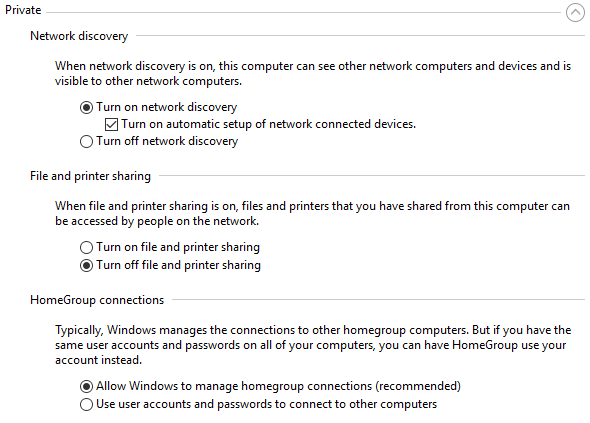
Network Discovery – This setting is turned on for private networks by default and it means that your computer can be seen by other computers and vice versa. What this means in practice is that when yous open up Windows Explorer, you might see the name of another computer connected to your network under Network Locations.
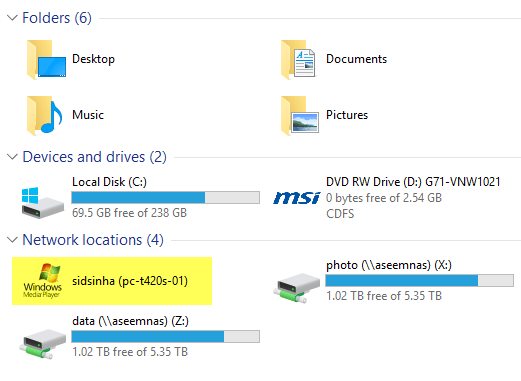
File and Printer Sharing – This setting will allow others to access shared folders and printers on your figurer. I always plow this to Off even on private networks unless I need to use it in a specific situation. There are so many times when guests come over to my house, connect to the network and then could perhaps scan my organization. Only shared folders tin exist viewed, but you'd exist surprised how folders can get shared without your noesis.
HomeGroup connections – If y'all really do need to share files and folders, y'all should just setup a HomeGroup, which is more than secure and a lot easier to configure. If y'all do run into trouble, just read my HomeGroup troubleshooting guide.
At present expand out All Networks if you are using Windows 8 or Windows 10. There are a couple of more than settings here.
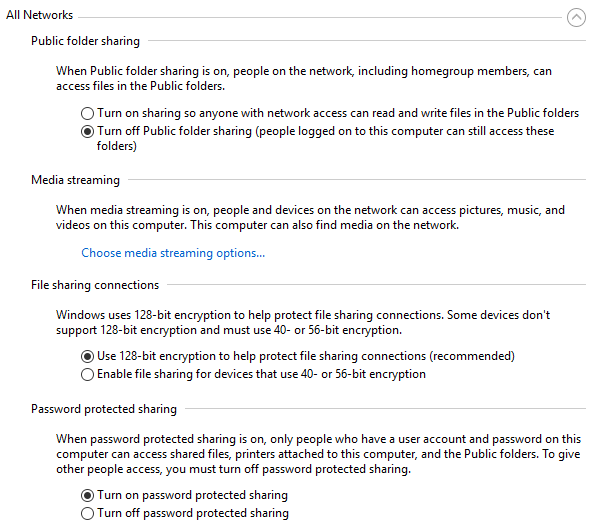
Public Folder Sharing – I recommend turning this off unless you specifically need to share data with another estimator. The reason is that it'southward very easy to accidentally relieve files into these publicly shared folders without realizing it, which will so be accessible by anyone on the network. A very useful feature when you need it, but a large privacy risk otherwise.
Media Streaming – This is some other selection you should continue disabled until you demand to use it. This basically turns your computer into a DLNA server so that y'all tin can stream music, movies and pictures to other devices on the network like an Xbox One, etc. When enabled, it opens upwards quite a few ports in your firewall too.
File Sharing Connections – This should e'er exist prepare to Use 128-bit encryption unless you need to share files with Windows 95, Windows 98 or Windows 2000 computers.
Countersign Protected Sharing – I highly recommend turning on password protected sharing because information technology volition force users to enter a username and password for an account on your computer in order to access any data.
Setup New Network & Troubleshoot Problems
The adjacent part I want to talk nearly is the section nether Change your networking settings. In Windows ten, you tin either setup a new connexion or troubleshoot issues.
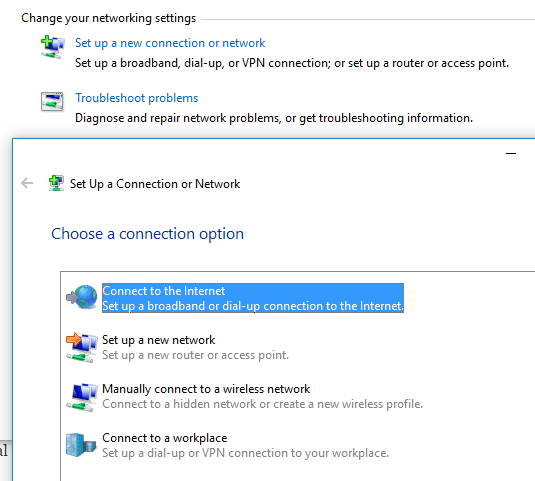
For setting up a new connection, you just have four options in Windows 8/10: Connect to the Net, Setup a new network, manually connect to a WiFi network or connexion to a VPN. Note that creating an advertising-hoc network is no longer possible in Windows 10.
If you click on Troubleshoot problems, you'll get a list of troubleshooting links for the Internet, network adapter, HomeGroup, Shared Binder, Printers, etc.
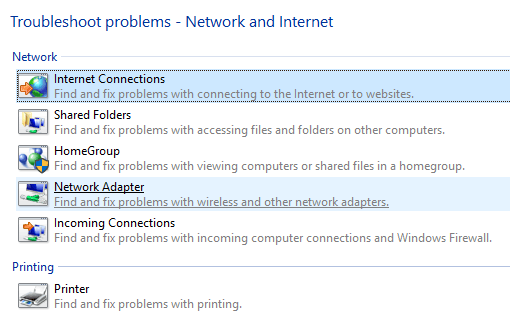
These are not just troubleshooting guides, they are bodily programs that run and gear up issues with various networking related services. I have found the Internet Connections and Network Adapter troubleshooting fixes to be the most useful.
Modify Adapter Settings
Lastly, let'due south talk most the Change adapter settings link on the left-paw side. Yous probably won't use this besides oftentimes, but it does come up in handy when troubleshooting network bug.
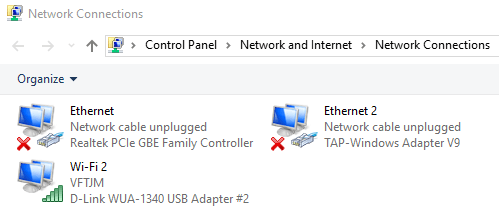
Here you will see a list of all the network adapters on your computer. If you have an Ethernet port and WiFi card, you'll see both items listed. You might also see other network adapters, just they are normally always virtual, meaning they are created by a software application like a VPN client or virtual machine program.
If you're having connexion problems, you lot tin can simply right-click on the adapter and choose Diagnose. This will unremarkably fix whatever problem with a misconfigured network adapter. If you right-click and choose Backdrop, you can configure your computer to use a static IP address rather than obtaining one from a DHCP server.
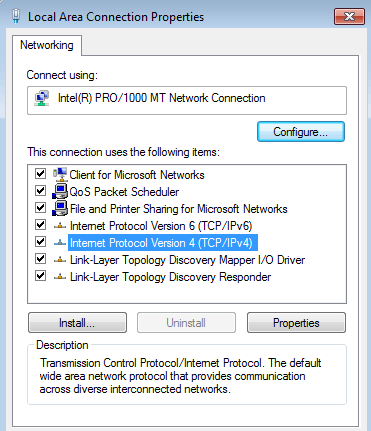
As mentioned, this is not something y'all'll need to do often, but it'south proficient to know for troubleshooting purposes. For the technically savvy, there are a lot of other avant-garde settings you tin can change here, just this guide is meant for newbies.
Hopefully, this article volition help you lot navigate the Network & Sharing Center settings without feeling overwhelmed. It's the easiest way to set network problems and to make your reckoner more secure past disabling a lot of the automatic sharing enabled by default. If you have any questions, mail a annotate. Savor!
Do not share my Personal Information.
How To Find Network Settings In Windows 7,
Source: https://www.online-tech-tips.com/windows-7/network-and-sharing-center-overview/
Posted by: duboisknowell.blogspot.com


0 Response to "How To Find Network Settings In Windows 7"
Post a Comment